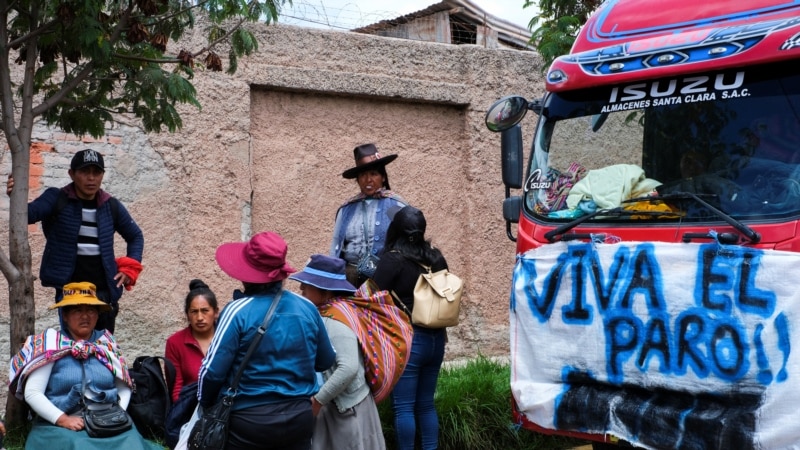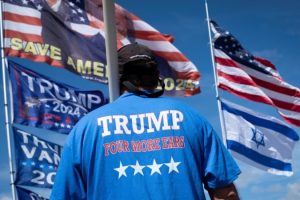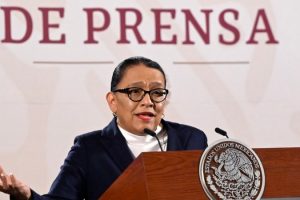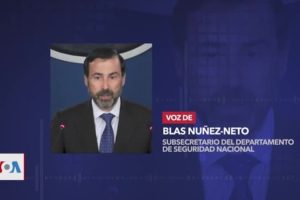Corruptionmistrust in public institutions, non-conformity with their governments and their negligence to solve the basic problems of the population are the reasons that have led the Bolivian Pamela Flores and the Peruvian Micaela Rodríguez to take to the streets to protest, facts which, according to analysts consulted by the voice of america, will worsen after the pandemic and the critical economic period that the region is going through.
Flores, a lawyer who speaks with indignation, recalling the episodes she has experienced in her land, says that she believes in the protest because it is a democratic option and because she hopes to achieve a better future: “Obviously we want Bolivia to be a better Bolivia. That is what we are asking for”.
A sentiment shared by the Administration and Entrepreneurship student, Micaela Rodríguez. She lives in Lima and also describes herself as a promoter of women’s rights. Although she has demonstrated on other occasions, she has recently protested against the government of President Dina Boluarte, which she describes as “illegitimate.”
And the outlook, say analysts, is not encouraging.
As people feel more free to go out, after the confinements generated by the pandemic, “we are going to see more and more protests in the region”, because “we are entering a very complex decade, of low growth, of recessions of economic conflicts and political complexities”, with weakened democracies, explained to the VOA Marta Lagos, director of Latinobarómetro.
Latin America will experience a period of “much social turbulence”.
For Luis Fernando Trejos Roseros, a professor at the Universidad del Norte de Barranquilla, the region will experience a period of “much social turbulence.”
“We are seeing the rise to power once again of progressive or center-left presidents with whom the public has great expectations… with these governments, in terms of meeting basic needs and, to the extent that these expectations are not met, we are going to to have people mobilizing in the street”, adds the analyst, who emphasizes that. Of course, there are tensions in countries like Chile and Colombia, with their current leaders, and the same thing is expected to happen in Brazil.
Therefore, “here what one would expect is a strengthening of the State, the institutional capacity of the State and, to the extent that these states are strong, people will be less tempted to go out into the streets,” adds the academic.
Why protest?
For six years, Pamela Flores, president of the citizen platform Hijos de la Patria, has turned to the streets in Bolivia. First, in 2016, against the referendum of former president Evo Morales, that he was seeking re-election, which was rejected; then, in 2019 to repudiate the results of the 2019 presidential elections and now, to demonstrate his disagreement with the arrest of Luis Fernando Camacho, Governor of Santa Cruz. This, he points out, despite the “violation of fundamental rights” that the protesters have experienced.
“I am a woman who is obviously concerned about everything that is happening because, if we don’t put our chests up now, as they say, if we don’t put on our shirts… and we fight for better days for our future generations, then this will continue to advance”, referring, according to her, to the “dictatorship” of President Luis Arce.
The feeling of frustration is shared by Micaela Rodríguez, 28, who sadly describes the situation in her country, the victims who have left the demonstrations, and the perception that, year after year, the situation has changed little or nothing. , as a result of the political and social crises,
“I am not oblivious to the fact that, within Peru, there is a systematic and structural difference, in relation to people’s rights,” the young woman told the VOAwho evoked a trip to Cajamarca, where he realized that citizens had little or no access to basic services.
“It is this centralism that we know and that exists in Peru that makes them demonstrate and demand a call to the authorities to attend to many of their rights,” says the Peruvian.
no trust
But the analyst Marta Lagos, The biggest crisis that Latin America has is mistrust with others and with public institutions “far from the people”, such as parliament, political parties, the judicial system and the government.
According to the director of Latinobarómetro, in the last decade, the average approval of government in the region fell from 60 to 30.
“This is a chronically ill person who has not had treatment. He has a diagnosis but no treatment,” she adds.
Trejos, an international analyst, also explains that in Latin America there is a perceived deinstitutionalization of the State: “When I go out into the streets, what I am putting into question is the State’s ability to resolve demands and social. And, if the State is not strengthened, there will be more social trauma due to the increase in mobilizations”.
And this is confirmed by Pamela, as she says -with a little anger- that she feels dissatisfied with “the abuse of power, so much corruption and drug trafficking” that is experienced in Bolivia.
A topic that is not alien to Micaela, who perceives the current Peruvian government of President Dina Boluarte as “illegitimate” and who describes corruption as one of the greatest evils that not only Peru but the region suffers.
Why do the marches turn violent?
According to the authorities, almost 60 people have died in the demonstrations in Peru. In Bolivia, hundreds have been injured. In Brazil, during the attack on public institutions, several were injured.
The violence, says Lagos, is a consequence of the “lack of integration, of the exclusion of large portions of the population from the benefits of economic growth.”
As for those who take the law into their own hands, Lagos believes that it is “a symptom of failed states”, which cannot control the entire territory and do not raise enough funds to strengthen themselves. Therefore, the security of citizens is affected and violence is “validated” because, “to the extent that the State does not arrive, drug trafficking territories are taken over… organized crime. It is a breeding ground for those organizations.”
For Trejos, with recent events, “It is evident that in Latin America we do not have non-violent dispute resolution mechanisms that have been legitimized by society” and that it is part of the marches because “unfortunately”, with this type of violent situation, more attention is drawn and more media coverage is generated than peaceful ones.
Background
According to analysts, recent protests in countries like Bolivia, against the arrest of the governor of Santa Cruz, and Peru, after the dismissal of former president Pedro Castillo and the rise of President Boluarte, in addition to the attacks in Brazil, They are not isolated events to a reality that had already been presented, since 2019, in Colombia, Ecuador and Chile.
You have to read them as “Links in a long chain of social mobilizations that are exacerbated during pandemics or during the quarantines generated by the COVID-19 pandemic,” says Trejos. The closest example, for him, is Chile, where the mobilization led to a constituent process. Ecuador, which led marches pressured by the rise in the price of public transport and Colombia where systematic mobilizations were presentedduring the year 2021.
For Marta Lagos, the year 2019 showed the reality that the 2010s had been accumulating: “Unsatisfied citizen demands, in the region” attenuated, in addition, by the pandemic, which showed “all the weaknesses of the State, making it impossible for the political system will ignore them.”
Connect with the Voice of America! Subscribe to our channel Youtube and activate notifications, or follow us on social networks: Facebook, Twitter and instagram.














